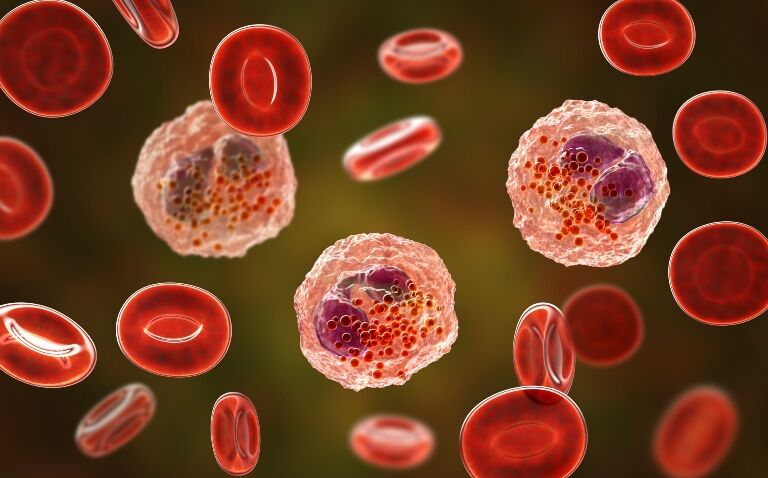Oral dexpramipexole significantly reduced blood absolute eosinophil count (AEC) after 12 weeks compared to placebo in patients with eosinophilic asthma, highlighting the potential value of oral therapy for these patients.
The EXHALE trial, published in the Journal of Allergy and Clinical Immunology, was a randomised, double-blind, placebo-controlled proof-of-concept trial, in adults with inadequately controlled moderate to severe asthma and an AEC greater than or equal to 300/μL.
Patients were randomly assigned to one of three dexpramipexole doses: 37.5 mg, 75 mg and 150 mg, or matching placebo, all given twice daily. The primary endpoint was the relative change in AEC from baseline to week 12.
The prebronchodilator FEV1 week-12 change from baseline was a key secondary endpoint, and the nasal eosinophil peroxidase level was used an exploratory endpoint.
Absolute eosinophil counts
A total of 103 subjects were included and randomised to one of the four treatment arms.
At week 12, dexpramipexole significantly reduced the placebo-corrected AEC ratio to baseline by 77% and 66% for the 150 mg and 75 mg doses, respectively (ratio = 0.23, 95% CI, 0.12 – 0.43, p < .0001, ratio = 0.34, 95% CI 0.18 – 0.65, p = 0.0014).
Dexpramipexole also reduced the exploratory endpoint of nasal eosinophil peroxidase, a biomarker of airway eosinophilia, at week 12 compared to baseline in the both the 150 mg and 75 mg dosage groups (p = 0.020 and 0.021 respectively).
Placebo-corrected FEV1 increases were observed starting at week four, although this increase was not significant. Dexpramipexole displayed a favourable safety profile.
Dexpramipexole and asthma
Dexpramipexole is a small, oral eosinophil-lowering drug currently in Phase 3 development for eosinophilic asthma. The drug inhibits the maturation of eosinophils in the bone marrow based on evidence from cell cultures and human biopsies, thereby lowering peripheral blood eosinophil levels.
According to the Global Initiative for Asthma, asthma affects more than 300 million people worldwide. Estimates suggest half to two-thirds of those with severe asthma have the eosinophilic phenotype, in which there is an increased level of eosinophils.
Although moderate-to-severe disease can be managed by monoclonal antibodies such as tezepelumab, these drugs are only available for injection. If approved, oral dexpramipexole could provide a compelling alternative to injectable biologics and could potentially be used earlier in the asthma treatment paradigm to prevent progression of disease.










